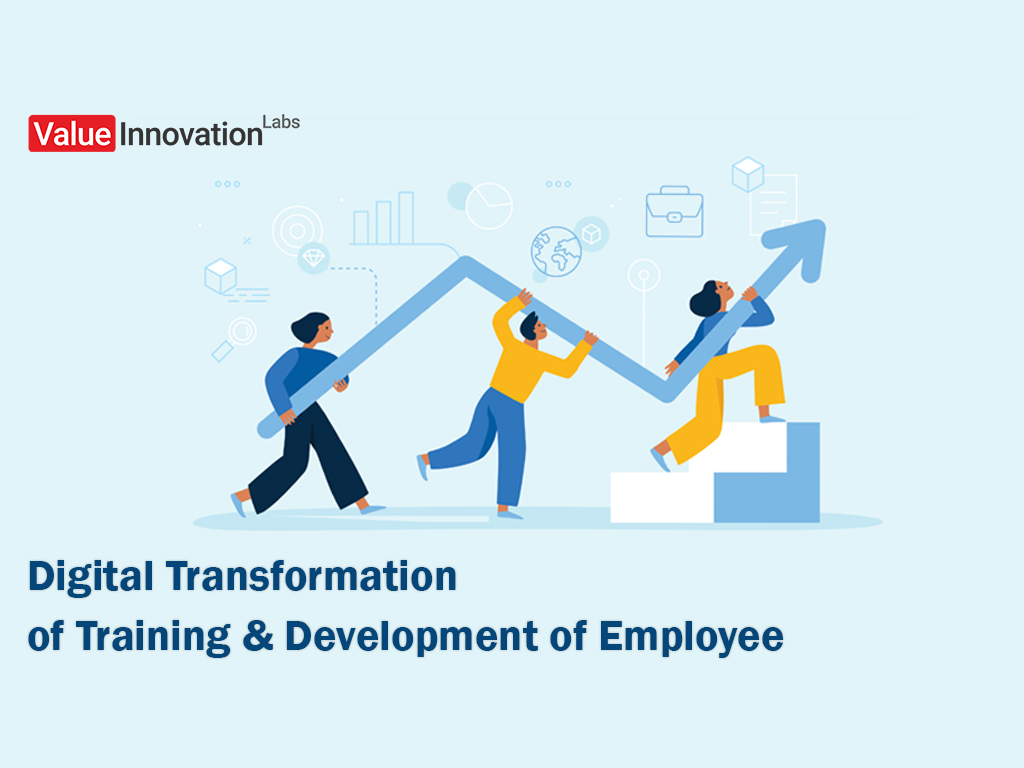
Digital Transformation of Training & Development of Employee
- by Riya Asthana
Nowadays, employee training needs to be less time-consuming and should be delivered during the job. It should remain adequate and relevant to the current job responsibilities of an employee. Therefore, they can enhance their knowledge and skills without restricting business continuity and reducing productivity. This digital transformation of employee training and development (T&D) is an explanation of these modern demands.
Ways of Executing the Digital Transformation of T&D
You can use different tools that can be used for the digital transformation of employee T&D:
1.Learning Management systems (LMS)
The LMS is the foundation of digital staff training. It helps to create and deliver the learning materials to trainees. The trainers and trainees can easily communicate, get the assessment of training results, track of progress, and more through LMS. It is a combination of traditional classroom instruction with e-learning. This modern LMS focus on learners and the effective circulation of learning content.
2. Mobile Applications
Mobile applications increase digital training by expanding the abilities of LMS. You can easily access the training materials through mobile devices. It is available 24 hours a day, seven days a week by using m-learning (Mobile Learning). This results that all the individuals who are operating from remote areas can give you a lot of benefits from learning. When the employees complete their training then this mobile app development helps to refresh their abilities. Programs like audio simulation help the employees to practice communication with consumers by emulating real-life discussions.
3. Extended Reality Technologies
XR (Extended Reality) technology is the most advanced kind of digital transformation for employee T&D which makes learning more enticing. Even it needs price and time dedication to create and distribute 3D e-learning content in XR environments, still, this technology is adopted by many. VR, AR, and mixed reality (MR) technologies all are involved in XR. They offer advanced learning opportunities to the employees. It mainly focuses on the areas like manufacturing and healthcare.
Digital Transformation of T&D in Practice
Now, check how digital transformation technology is affecting different kinds of staff training with the help of Value Innovation Labs.
Employee Orientation & Onboarding
Before the digital transformation, all the official records, also HR-related documents like hiring forms and onboarding training materials were distributed between different departments. It had all new and old versions of documents and electronic copies together which created a lot of chaos. Due to this digital transformation, orientation and onboarding become more accessible, faster, and more convenient.
LMS: It assists the new employees in adjusting to the firm. The FortySeven47, a software development company’s intranet, LMS lets you create employee profiles. They can get a start guide on administrative processes and an introduction video that consists of the information of the company’s mission, values, corporate culture, policies, and benefits through the LMS. The LMS can use read-made templates to make the onboarding process more accessible.
Mobile apps: The employee apps like LMS can store e-learning content and useful information like interactive manuals, corporate policies, a contact list, and more. The app can have an interactive map to help the new staff to find their way in the office. Gamification is often used in mobile apps to improve employee engagement and motivation. Some of the programs also support employee handbooks, job description management, orientation training management, and other onboarding functions.
XR: MR helps to boost custom software developer or staff training and onboarding. It makes the users view and interact with 3D information in real-time and visualize and manipulate the data.
- Self-learning, Continuous Learning & Microlearning
Due to digital transformation, trainees can access all accessible learning resources whenever they want. They can also develop the knowledge by having books, classes, and assessment tests on their PCs or mobile devices. The process of microlearning means you can study in small bits with the help of mobile devices. And this happened because of the digital transformation.
LMS: The employees can have unrestricted access to the learning content via LMSs that offer fresh energy for self-learning. You can easily search, download, and track the updates by using the FortySeven IT LMS and continue learning. Microlearning is a good fit for a custom software agency’s LMS as it simplifies and delivers short lessons that reduce the essential element of staff training.
Mobile apps: Through mobile applications, you can easily have the learning and self-assessment in a one-go. It can have extra e-learning information like videos, photos, charts, graphs, etc. It allows you to prepare in a better way for classroom or workshop sessions.
XR: These technologies are impractical for self-learning as it has a high cost and restricted availability for individual learners. It can add value to microlearning in the office as it offers engaging content.
Nowadays, employee training needs to be less time-consuming and should be delivered during the job. It should remain adequate and…
